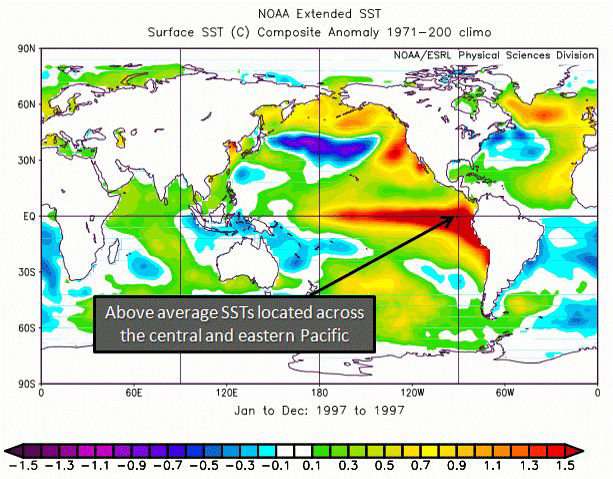Agrometeorological applications to predict the influence of climate on crops

UPM researchers are working on seasonal weather forecasts and crops based on data provided by the water surface temperature of the oceans.
Researchers from CEIGRAM (Research Centre for the Management of Agricultural and Environmental Risks, a joint centre of the Universidad Politécnica de Madrid (UPM), ENESA and AGROSEGURO), in collaboration with Universidad Complutense de Madrid (UCM), have quantified the impact of climatology, climate and their variations on the yields and crop quality using computer simulation models.
The researchers successfully applied the simulations on corn wheat and maize crops in the Iberian Peninsula. To do this, they used the data provided by the sea surface temperature and known patterns of teleconnection to establish statistical relationships between oceanic predictors and atmospheric variables.
Seasonal predictions provide information on climatological conditions for the next three or four months. Although the chaotic nature highly limits the predictive capacity of weather from 10 or 12 days, today it is possible to make longer-term forecasts in specific regions. To do this, researchers used components of the climate system that suffer slow periodic variations such as the case of the sea surface temperature.
The sea surface temperature allows us to make a long-term forecast because the heat capacity of the water is much greater than of the air. Thus, when a large oceanic area presents anomalous temperature values (cooling or heating), it can pass several months, even years until the recovery of is regular values. During this time, the sea surface can release such an amount of energy to the air that it can alter the global atmospheric circulation regimes.
El Niño phenomena (heating) and La Niña (cooling) in the equatorial Pacific are examples of anomalous temperature values. For instance, when El Niño occurs (every three to seven years), torrential rains in Peru are more likely to occur as well as droughts in Indonesia and South Africa. As the El Niño/Niña events can be predicted with several months in advance, the possible climatic impact can also be predicted. This is the basis of seasonal prediction. There are other oceanic regions with known impact on the global climate, and this is known in climatology as patterns of teleconnection.
Taking this as a basis, a team of researchers from CEIGRAM has studied the influence of these seasonal predictions on crop yields. From the data provided by the sea surface temperature and the teleconnection patterns, researchers established statistical relationships between oceanic predictor and atmospheric variables (temperature, rain, etc.).
This study was carried out by UPM researchers in collaboration with the climate variability group from UCM (TROPA group). The results show the predictive capacity of ocean temperature in monsoon rains in West Africa, including the heavy rainfall events.
Margarita Ruiz Ramos, a CEIGRAM researcher, states, "From the agronomic point of view, the computer simulation models of crops are able to quantify the impact of the meteorology, the weather and their variations on the yields". Researchers have successfully applied this methodology on wheat and maize crops in the Iberian Peninsula and are currently exploring new applications, for instance, the seasonal prediction of forage from pastures and meadows in the French Central Massif with the collaboration of the French National Institute for Agricultural Research (INRA).
According to the researchers Iñigo Gómora and Belén Rodríguez-Fonseca, CEIGRAM and TROPA work in a global context of climate services and provide agrometeorological applications to insurance companies, public administrations and other final users.
More information: Iñigo Gómara et al. Impact of dynamical regionalization on precipitation biases and teleconnections over West Africa, Climate Dynamics (2017). DOI: 10.1007/s00382-017-3886-4
Journal information: Climate Dynamics
Provided by Universidad Politécnica de Madrid



















